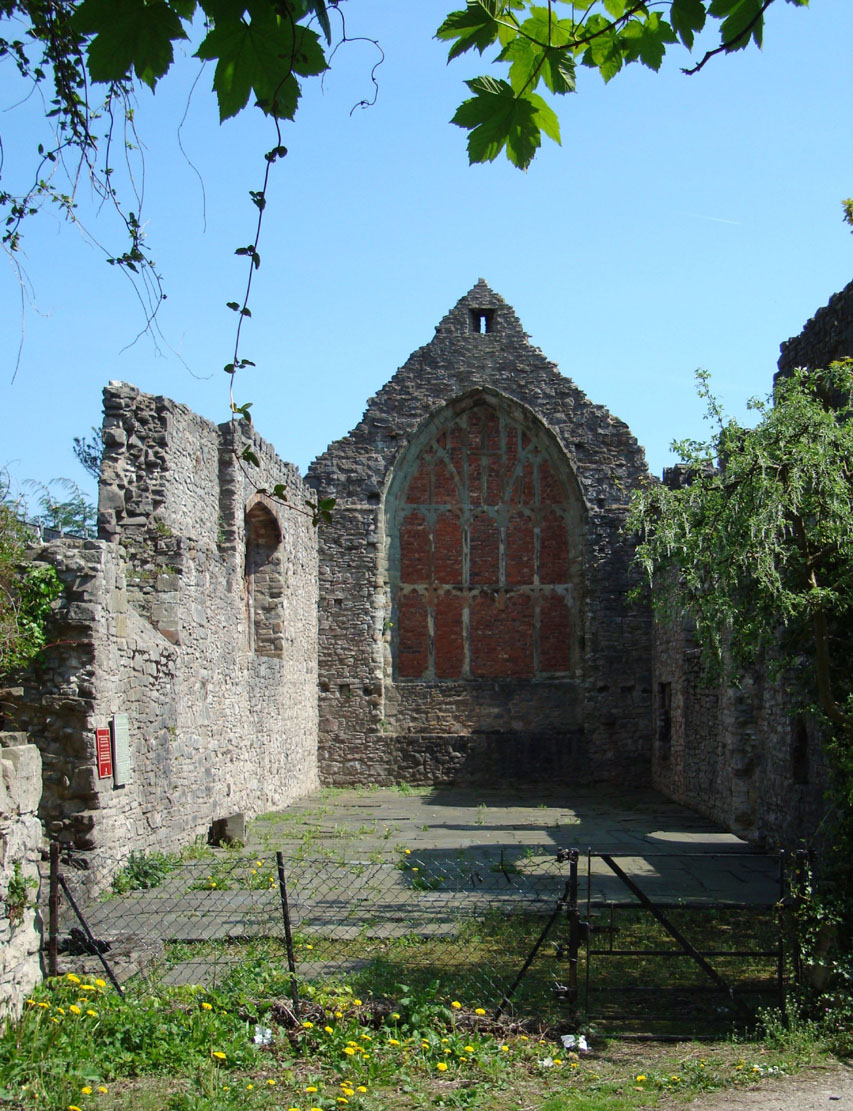History
The Carmelites came to Denbigh in the late 13th century and in 1289 founded the friary under the patronage of John de Swynmore. As a mendicant order, they lived on donations and alms, teaching and preaching in return. They enjoyed the special care of the Salusbury family from Lleweni and Bachymbyd, many of whom were buried in the monastery. At the beginning of the 16th century the community was patronized by the bishop of St. Asaph, Henry Standish, who was a Carmelite himself and had his own chamber in the friary. His successor Robert Purefoy also lived in Denbigh, though this did not save the community from being dissolved in 1538. At that time, only four monks lived in the friary. In the early modern period, the monastery buildings were sold to private persons and transformed into resiedntial houses. The church was in good condition until 1898, when it was destroyed by fire and fell into ruin.
Architecture
The monastery church was a simple building on a rectangular plan measuring 19 x 7.5 meters, without an externally separated chancel. The building had not buttresses. In the middle of its length there was a wooden ridge turret on the gable roof. In the fifteenth century, a large ogival window with a sophisticated, decorative tracery in the style of perpendicular gothic was placed in the eastern wall. Inside in the southeastern wall of the presbytery there were stone sedilia and piscina. Further on the west side, a timber rood screen separated the choir from the central part of the temple (walking place) from where the portal led to the cloisters located in the south. Another rood screen on the west side separated the nave, available to lay people. Opposite the second rood screen were two altars and another piscina in the southern wall.
The economic and residential base was provided by three wings located around the cloisters and an inner courtyard. The distinguishing feature of the Carmelite community from other monasterys was the floor of the buildings, which overlapped the cloister below it. In the ground floor on the eastern side there was a chapter house and a private chamber of the bishop. The southern wing was occupied by a dormitory and probably a refectory, and on the west side a large room containing either a refectory or a guest chamber. The kitchen and brewery mentioned in written sources had to be near the refectory. Further on, the community also housed stables and barns.
To this day, the unroofed chancel of the monastery church and fragments of the nave walls have survived. The monastery buildings with the refectory and dormitory also have survived, but they were significantly transformed in the early modern period. Currently they are in private hands (Abbey Cottage), while the ruins of the church are available for tourists.
bibliography:
Burton J., Stöber K., Abbeys and Priories of Medieval Wales, Chippenham 2015.
Butler L., Denbigh Castle, Cardiff 2007.
Salter M., Abbeys, priories and cathedrals of Wales, Malvern 2012.
Website coflein.gov.uk, Denbigh, Csrmelite Friary (White Friars).



